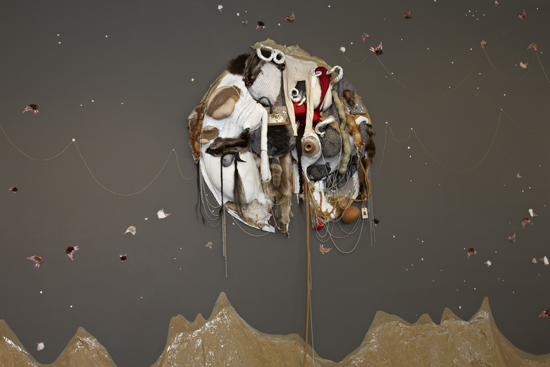From Sharne Wolff…
In the book written for artist Wangechi Mutu’s simultaneous 2013 U.S. exhibition at Nasher Museum of Art, North Carolina, curator Trevor Schoonmaker states that Mutu’s art “marries poetic symbolism with sociopolitical critique to explore issues of gender, race, war, colonialism, and, particularly, the exoticization of the black female body”. Known in particular for her colourful figurative collages that depict women, Mutu’s intention is to keep women in the centre of her work, both as protagonist and narrator.
The artist was born in Nairobi but now lives in New York. Mutu trained as a sculptor and anthropologist and having worked across the disciplines of drawing, collage, sculpture installation and video, is considered to be one of the most important of Africa’s contemporary artists. Rachel Kent is the senior curator for this show at the MCA simply titled with the artist’s name. It represents the most comprehensive international survey of the artists work to date and covers more than a decade of Mutu’s past work in various mediums. A large wall of the gallery has also been converted to a 3D lunar landscape for a site-specific adaptation of 2008’s Perhaps the Moon Will Save Us. Video works in this show include Amazing Grace where the artist, as subject dressed in flowing white and lace, walks from a desolate beach into the ocean singing the words of the famous hymn in her native language of Kikuyu. Here Mutu pays her respects to those who were lost at sea on slave ships.
Until August 11.
Museum of Contemporary Art Australia, Sydney
Pic: Wangechi Mutu, Perhaps the Moon Will Save Us, 2008. Blankets, plastic pearls, aluminium foil, animal pelts, clothing, photo collage, packing tape, ink, paint, dimensions variable. Image courtesy the artist and Gladstone Gallery, New York and Brussels, copyright the artist.

